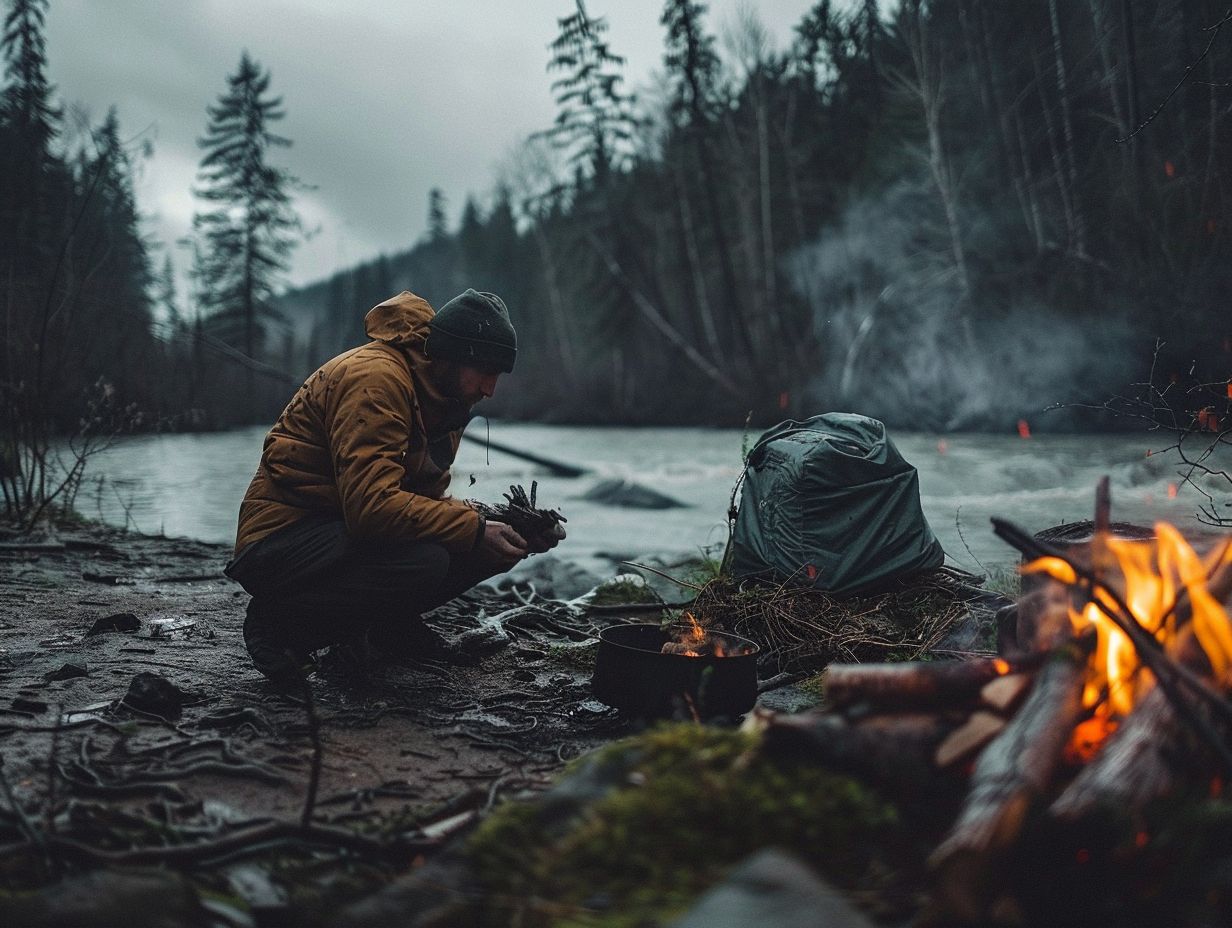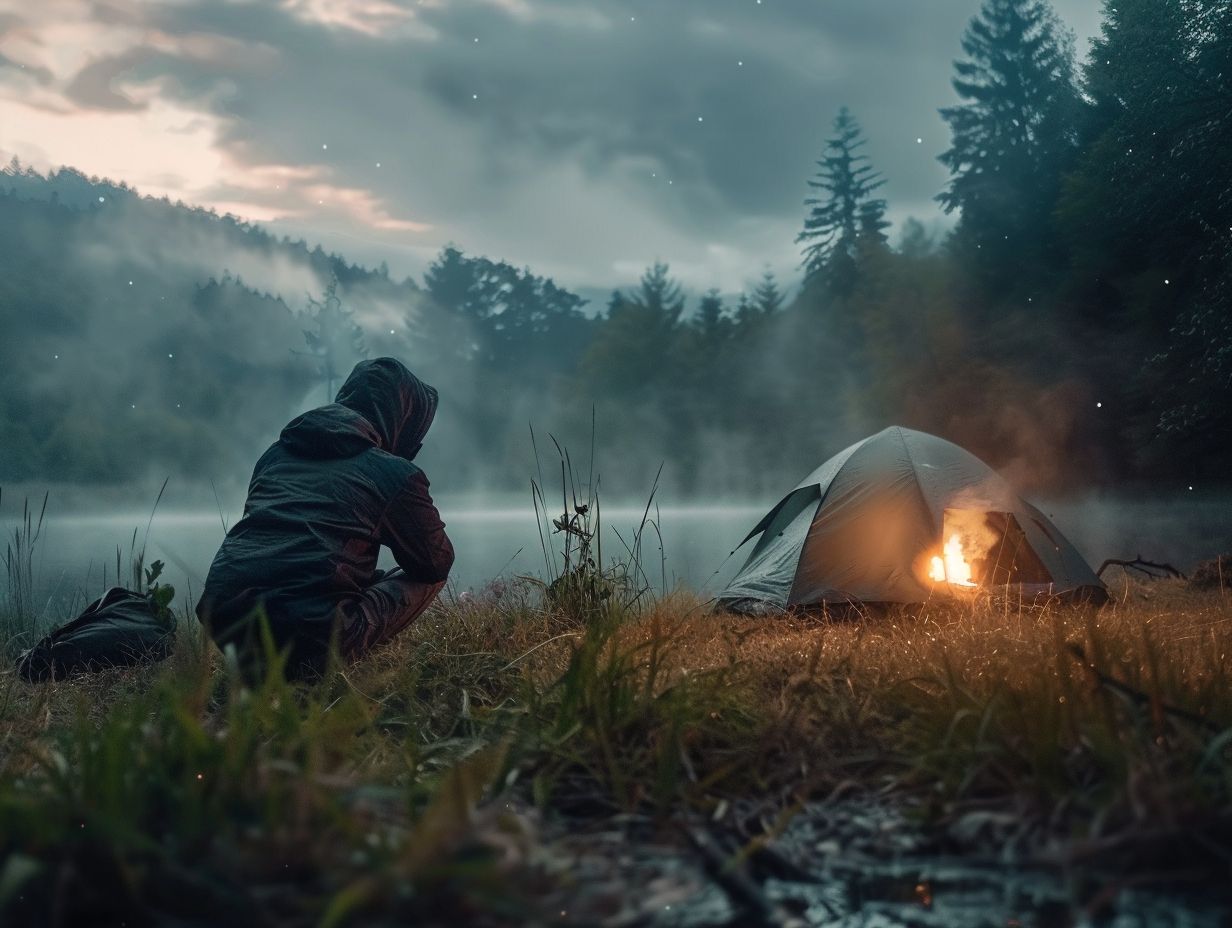Are you an outdoor enthusiast seeking to elevate your camping experience?
Foraging during your camping trips can establish a profound connection with nature and bring about various benefits for your health and the environment.
This all-encompassing guide will delve into the nutritional and environmental merits of foraging, the necessary tools and equipment for effective foraging, strategies for recognizing edible plants and fungi, ethical guidelines for sustainable foraging, safety measures to prevent risks, and methods for preparing and cooking delectable foraged meals.
Embark on this foraging expedition with us and uncover the marvels of nature’s abundance.
Key Takeaways:
 1.
1.
- Foraging while camping provides nutritional and environmental benefits, making it a great addition to any outdoor adventure.
- Proper tools and equipment are essential for safe and successful foraging. Make sure to pack them before heading out on your trip.
- Knowing how to identify edible plants and fungi is crucial for safe foraging. Always use reliable sources and follow proper identification tips.
What is Foraging?
Foraging involves the practice of searching, identifying, and harvesting wild edible plants, mushrooms, herbs, and seeds from the natural landscape.
As you engage in foraging, you immerse yourself in the natural environment, utilising your knowledge of plant characteristics and growth patterns to locate potential food sources.
It is essential to conduct thorough research on the region’s flora, understand safety precautions, and utilise guides to correctly identify species during this process.
Research plays a critical role in foraging, enabling foragers to comprehend the properties of various plants and differentiate between edible species and toxic ones. Safety measures are crucial to prevent accidental ingestion of poisonous plants.
To enhance your foraging experience, consider seeking the guidance of experienced experts who can provide valuable insights into the best locations and offer advice on sustainable harvesting practices.
Benefits of Foraging While Camping
When you embark on a camping trip with a focus on foraging, you are presented with a distinctive opportunity to connect with nature, gain insight into the environment, and harvest fresh, nutritious food directly from the landscape.
By exploring the wilderness, identifying common plants, and incorporating foraged ingredients into your meals, you can create a sustainable camping experience.
Nutritional and Environmental Benefits
Individuals can derive essential vitamins, minerals, and nutrients from wild plants, contributing to a diverse and healthy diet. By understanding Latin names and identifying poisonous plants, you prioritise safety and health while exploring the environment.
Foraged foods are not only abundant in vital nutrients but also offer a unique culinary experience rooted in nature. Wild edibles like dandelion greens provide a rich source of Vitamin A, C, and K, while chickweed offers antioxidants like beta-carotene and Vitamin C.
By familiarising yourself with Latin names, you can accurately pinpoint beneficial plants like stinging nettle, renowned for its high iron and calcium content. This knowledge not only enhances the foraging experience but also safeguards against potentially harmful encounters with toxic species.
Essential Foraging Tools and Equipment
Accessing informative guidebooks, engaging blogs, and insightful podcasts like Backyard Forager, Castanea, Eat the Weeds, Thorn & Wonder, and Hunt Gather Talk can greatly enhance your knowledge and skills in plant identification, sustainable harvesting, and safe foraging practices.
Must-Have Items for Safe and Successful Foraging

Individuals engaging in foraging should take into account essential items such as securing a reliable mentor for guidance, conducting thorough research on the local flora, and seeking advice from experts to ensure a safe and successful foraging endeavor.
Understanding the distinct characteristics of the region and consulting with specialists are vital components of practicing sustainable foraging.
The presence of a mentor offers invaluable expertise and insight, facilitating the identification of edible plants and potential hazards. Extensive research fosters a deeper understanding of the ecosystem, enabling foragers to make well-informed decisions.
Collaborating with experts not only enhances safety measures but also advocates for environmental sustainability through responsible harvesting techniques. By integrating these elements, foragers can embark on expeditions that are both educational and respectful towards nature.
Identifying Edible Plants and Fungi
Precisely identifying edible plants and fungi requires the ability to recognise key botanical features, comprehend chemical compositions, and distinguish between non-toxic species and harmful ones. Foragers must be knowledgeable about prevalent plant varieties in their area and frequently engage in hiking to explore nature and uncover new foraging locations.
Tips for Proper Identification
When engaging in plant identification for foraging purposes, it is crucial for you to pay attention to specific characteristics, conduct chemical tests when necessary, and be aware of common species in your region.
Regular hikes in diverse environments can aid in expanding your knowledge and honing your identification skills. By observing features such as leaf shape, texture, and arrangement, you can start narrowing down potential edible plants.
Conducting simple chemical tests, such as the silver nitrate test for distinguishing between edible and toxic members of the Solanaceae family, can provide further clarity.
Familiarising yourself with the common flora in your area can help you quickly recognise safe options. Engaging in hiking not only allows for a hands-on approach to identification but also boosts confidence and connection with nature.
Foraging Ethics and Sustainability
Ethical foraging is centred on environmental principles that emphasize maintaining a healthy equilibrium between gathering nutrient-rich plants, preparing nourishing dishes, and adhering to sustainable foraging methods. By incorporating harvested ingredients into culinary recipes, foragers can actively participate in the cycle of sustainable foraging and culinary innovation.
Responsible Foraging Practices
Incorporate responsible foraging practices into your routine by respecting the natural environment, valuing the health benefits of foraged plants, and integrating nutrient-rich ingredients into your meals.
By adhering to sustainable foraging guidelines and creating delicious recipes, you can play a role in conserving local ecosystems and promoting nutritious, environmentally-conscious dining options.
Prioritise environmental stewardship as a fundamental aspect of responsible foraging by being aware of the potential impact foraging activities may have on ecosystems. Understanding the nutritional content of foraged resources allows you to create meals that are not only flavoursome but also teeming with essential vitamins and minerals.
Sustainable foraging methods are crucial in maintaining the delicate balance of nature and fostering a deep connection to the environment through a harmonious approach to sourcing wild ingredients.
Foraging Safety and Precautions

Prioritising foraging safety requires your understanding of potential hazards, identification of harmful species, practising sustainable harvesting methods, and recognition of medicinal plants for your backpacking or outdoor adventures.
By following safety precautions and understanding the therapeutic value of certain plants, you can ensure a safer and more enriching foraging experience.
Avoiding Poisonous Plants and Hazards
To safeguard against potential dangers whilst foraging, you need to be able to identify poisonous plants, understand toxic chemicals or toxins, and differentiate between harmful and medicinal species.
Maintaining awareness of hazards will ensure a safer harvest and promote responsible foraging practices, particularly during backpacking or wilderness exploration.
It is crucial for foragers to be able to recognise key characteristics of poisonous plants, such as specific leaf shapes, colours, and growth patterns.
Understanding plant toxins and their effects on the body is essential for making informed decisions about what to consume. Distinguishing between harmful and beneficial species can help prevent accidental ingestion of toxic substances.
For a secure foraging experience, it is always advisable to research the local flora, carry a reliable plant identification guide, and seek guidance from experienced foragers or botanists whilst exploring the outdoors.
Preparing and Cooking Foraged Foods
When preparing and cooking foraged foods, you must focus on transforming freshly harvested ingredients into flavourful meals that highlight wild herbs, seeds, and plants found in the landscape. By developing nutritious recipes that showcase the diverse flavours of the wilderness, foragers can enhance their culinary expertise and embrace the sustainable essence of foraging.
Recipes and Techniques for Delicious Meals
Creating delicious meals from foraged ingredients involves mastering culinary techniques, exploring diverse recipes that highlight the nutritional benefits of wild herbs and seeds, and incorporating the unique flavours of the landscape into every dish.
By embracing creative cooking methods and utilising nutrient-rich plants, you can enjoy a culinary adventure rooted in sustainability and natural abundance.
For those seeking to elevate their foraged meals, incorporating wild edible flowers like violets or dandelions can add both visual appeal and subtle flavours.
Experimenting with various preservation methods such as drying herbs for seasoning or making infused vinegars with wild berries can extend the enjoyment of foraged finds beyond their prime season.
Additionally, blending foraged greens into smoothies or pestos can offer a fresh twist on familiar dishes while boosting the nutritional content of the meal.
Frequently Asked Questions
What is foraging while camping?

Foraging while camping is the practice of gathering wild edible plants, nuts, fruits, and other resources from the surrounding natural environment during a camping trip.
Is it safe to forage while camping?
Foraging while camping can be safe if done responsibly. Make sure to properly identify edible plants and avoid any poisonous ones. Also, only take what you need and do not damage the environment.
What are some common edible plants to forage while camping?
Some common edible plants that can be foraged while camping include berries, wild mushrooms, greens, nuts, and edible flowers. However, it is important to properly identify these plants before consuming them.
What are some important safety precautions to take when foraging while camping?
Always make sure to properly identify the plants you are foraging and avoid any that you are unsure of. Also, avoid foraging in areas that may be contaminated with pesticides or other harmful substances. And always ensure to leave enough of the plant for it to continue growing and flourishing in its natural habitat.
Are there any tools or equipment needed for foraging while camping?
While it is not necessary to have any special equipment for foraging while camping, it can be helpful to have a small foraging knife or scissors for harvesting plants. It is also recommended to bring a guidebook or foraging app to help with plant identification.
Can I forage while camping in any location?
It is important to check with the campground or the local park authorities before foraging while camping. Some areas may have restrictions on foraging or may have specific rules and regulations in place to protect the environment. Always respect the rules and regulations of the location you are camping in.


